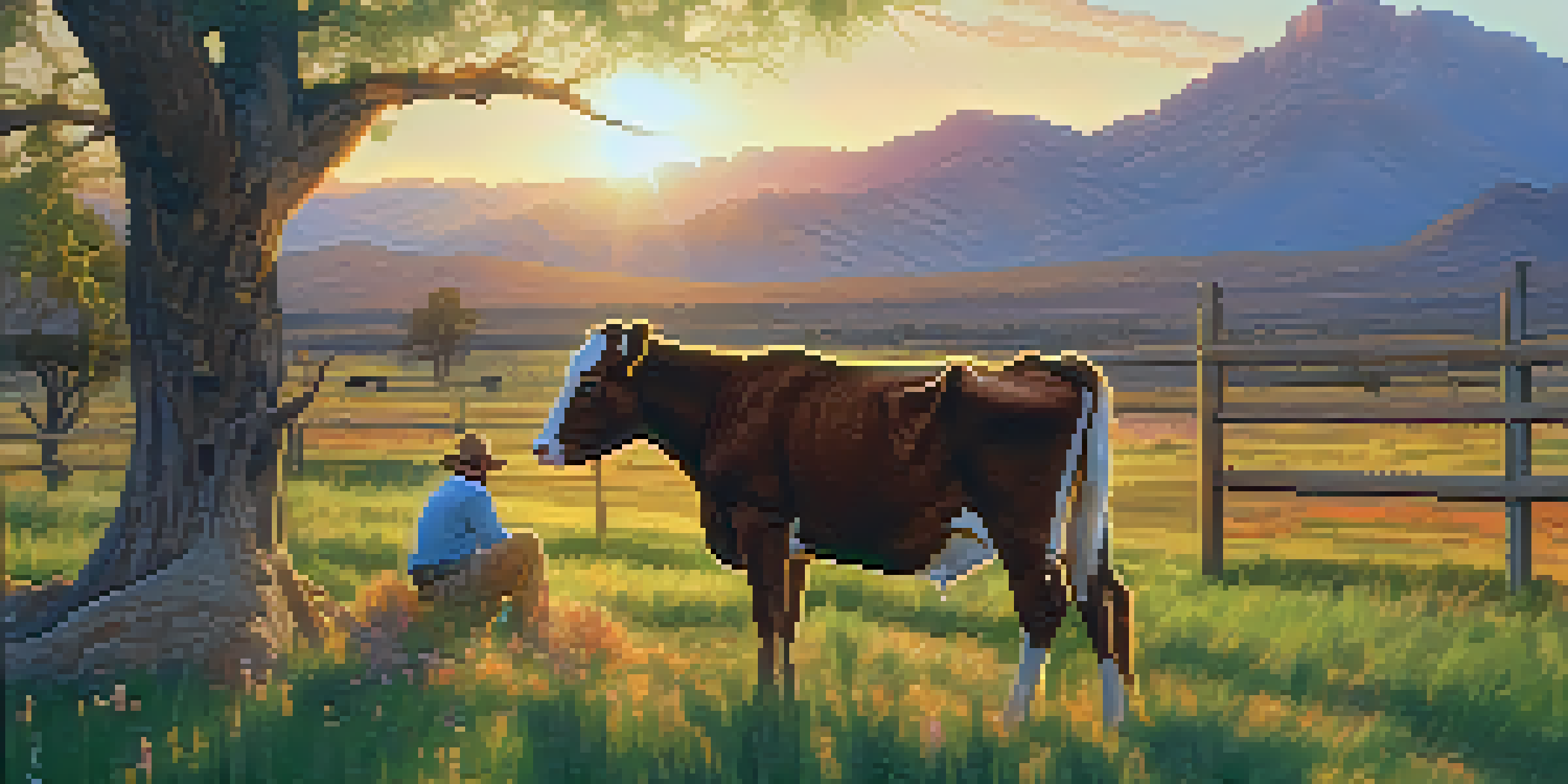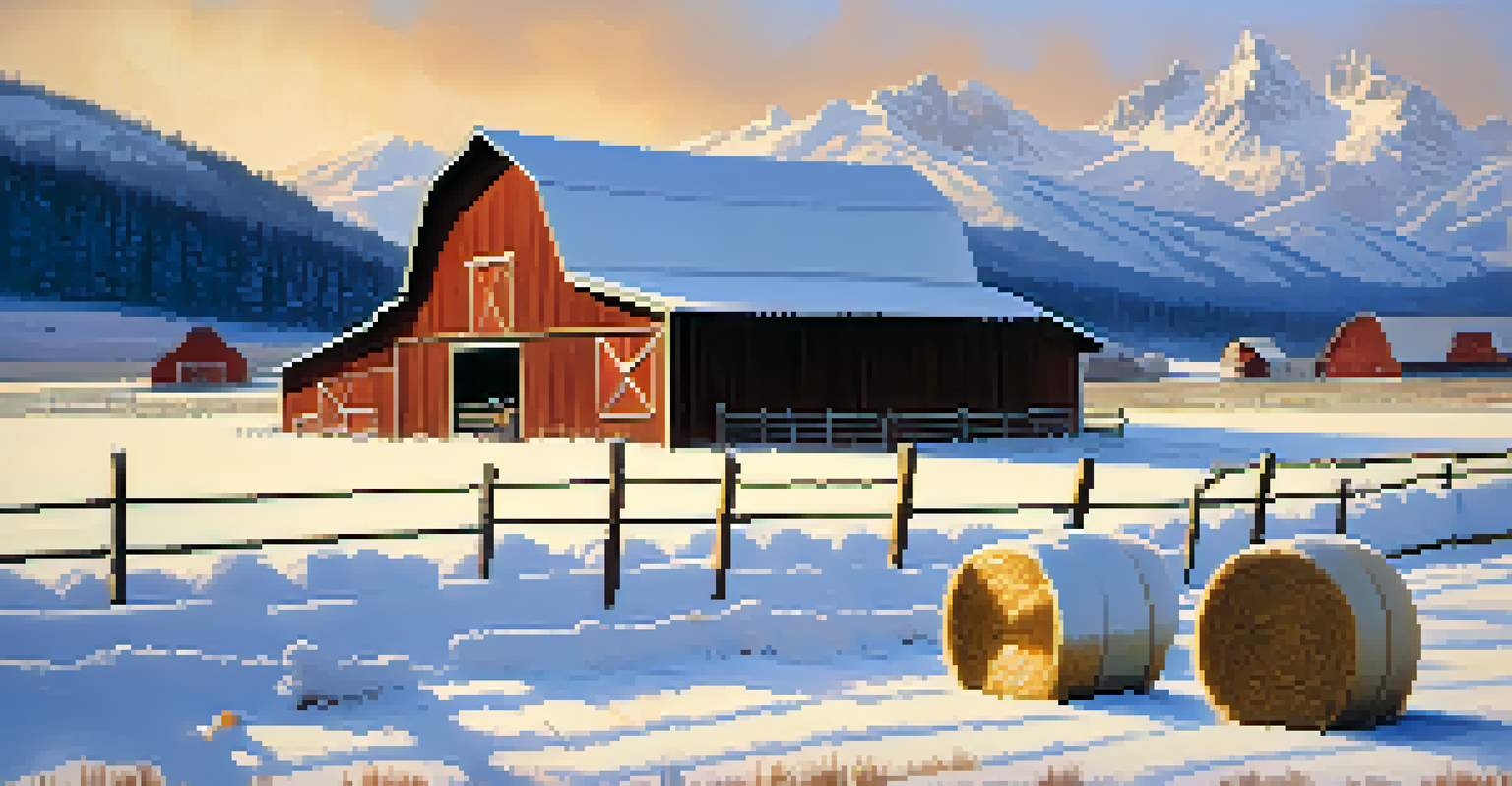Seasonal Changes and Their Impact on Arizona Ranching Life

Understanding Arizona's Unique Climate and Seasons
Arizona is well-known for its striking desert landscapes, but it experiences a range of seasonal changes that significantly impact ranching. The state has a diverse climate, from the arid deserts in the south to the cooler, forested regions in the north. These variations create distinct seasons that ranchers must adapt to in order to maintain their livestock and crops.
In the desert, the only thing that can save us is water, and the only thing that can destroy us is water.
In the warmer months, ranchers often contend with soaring temperatures and limited water resources. This requires careful management of grazing lands and the implementation of irrigation systems to support the growth of forage for livestock. By understanding these seasonal trends, ranchers can make informed decisions to ensure the health and productivity of their herds.
Conversely, during the cooler months, ranchers may face challenges like frost or even snow in higher elevations. These weather conditions influence breeding cycles and the overall management of livestock. Adapting to these seasonal changes is crucial for optimizing ranching operations and sustaining the livelihoods that depend on them.
The Impact of Monsoon Season on Ranching Practices
One of Arizona's most defining seasonal events is the monsoon season, which usually occurs from June to September. This period is marked by intense thunderstorms that can dramatically alter the landscape and affect ranching activities. For ranchers, the monsoon brings both challenges and opportunities, particularly in terms of water supply and pasture growth.

The heavy rainfall can rejuvenate parched pastures, allowing for lush growth that benefits grazing livestock. However, the unpredictable nature of monsoon storms can also result in flooding or erosion, which may damage infrastructure and disrupt feeding schedules. Ranchers must stay vigilant and adaptable to mitigate these risks while maximizing the benefits of the rain.
Arizona's Climate Requires Adaptation
Ranchers in Arizona must adapt their practices to cope with diverse seasonal changes, from extreme heat in summer to cold winters.
Additionally, the increased moisture can lead to a rise in pests and diseases, posing further challenges for livestock health. Ranchers often need to adjust their management strategies, such as implementing vaccination programs or changing feeding practices, to ensure their animals remain healthy during this tumultuous time.
Winter Challenges: Preparing for the Cold Months
As winter approaches, ranchers in Arizona's higher elevations begin to prepare for the cold that can impact livestock and operations. Cold temperatures and potential snowfall require ranchers to provide adequate shelter and food for their animals. This preparation is essential to ensure that livestock remain healthy and productive through the winter months.
Ranchers are the backbone of our food systems, adapting to the whims of nature while nurturing the land.
For ranchers, the priority is often on feeding strategies, as natural forage may be scarce. This may involve supplementing diets with hay or grains, depending on availability and cost. Careful planning during this season can help ranchers minimize losses and keep their animals in good condition.
Moreover, winter can also be a time for ranchers to focus on maintenance tasks around the ranch. With less outdoor work needed for livestock management, many take this opportunity to repair fences, maintain equipment, and plan for the upcoming spring season. This preparation is key to ensuring a smooth transition as the seasons change again.
Spring Awakening: Calving Season and New Growth
Spring is often seen as a time of renewal, especially in ranching life. This season marks the calving period for many herds, which brings both excitement and challenges. Ranchers carefully monitor their animals during this time, ensuring that calves are born healthy and that mothers receive the support they need.
During spring, the warmer temperatures and increased rainfall can lead to a burst of new growth in pastures. This is a welcome change, as it provides ample grazing opportunities for livestock. Ranchers often take advantage of this seasonal bounty, allowing their herds to graze on fresh forage, which is essential for their growth and milk production.
Monsoon Season's Dual Impact
The monsoon season offers both challenges and opportunities for ranchers, providing much-needed water but also risks of flooding and pests.
However, with new growth also comes the need for vigilance against potential diseases and parasites that thrive in warmer conditions. Ranchers must be proactive in their management strategies, including regular health checks and vaccinations, to safeguard their livestock from any seasonal threats.
Summer Heat: Managing Livestock in High Temperatures
Summer in Arizona can be brutally hot, with temperatures often exceeding 100 degrees Fahrenheit. For ranchers, managing livestock during this season poses unique challenges, as heat stress can impact animal health and productivity. Providing shade and ample water becomes critical during these sweltering months.
Ranchers often implement strategies such as rotating grazing areas to prevent overgrazing and allow pastures to recover. This not only helps maintain the health of the land but also ensures that animals have access to nutritious forage. Additionally, ranchers may adjust feeding times to cooler parts of the day to help mitigate heat stress.
This season also presents an opportunity for ranchers to focus on breeding strategies. Many take advantage of the warmer months to breed their livestock, ensuring that calves are born in the milder spring months. This cyclical approach reflects the adaptability of ranchers to the seasonal rhythms of their environment.
The Role of Technology in Adapting to Seasonal Changes
In recent years, technology has played an increasingly important role in how ranchers adapt to seasonal changes in Arizona. From weather monitoring systems to advanced irrigation technologies, ranchers now have tools at their disposal that help them make more informed decisions. These innovations can be game-changers, especially in a state known for its unpredictable climate.
For instance, many ranchers use data analytics to track weather patterns and predict seasonal shifts more accurately. This information allows them to plan grazing schedules, manage water resources, and optimize feed usage based on anticipated conditions. The ability to adapt quickly based on reliable data can enhance both efficiency and sustainability in ranching operations.
Technology Enhances Ranching Efficiency
Modern technology, such as weather monitoring and data analytics, helps ranchers make informed decisions to improve livestock management and sustainability.
Furthermore, technology has also improved livestock management through innovations like GPS tracking and health monitoring devices. These advancements help ranchers keep a close eye on their animals, ensuring they remain healthy and productive throughout the various seasonal challenges. Embracing technology not only aids in adapting to changes but also contributes to the overall resilience of ranching operations.
Cultural Traditions and Seasonal Activities in Ranching
Ranching in Arizona is not just about livestock management; it's also deeply intertwined with cultural traditions and seasonal activities. Many ranchers maintain practices passed down through generations, celebrating the rhythms of nature in their work. Events such as branding and round-ups are not only practical but also serve as cherished community gatherings.
These seasonal activities foster a sense of camaraderie among ranchers, as they come together to share knowledge, tools, and support. It's a beautiful reminder of how ranching is often a family affair, where traditions are honored and new generations learn the ropes from their elders. Such events reinforce the bonds that tie ranchers to their land and each other.

Moreover, cultural traditions often include seasonal festivals that celebrate the ranching lifestyle and promote local agriculture. These gatherings provide an opportunity for ranchers to showcase their hard work, share stories, and connect with the wider community. Embracing these traditions enriches the ranching experience and highlights the importance of seasonal changes in shaping not just the land, but also the people who steward it.